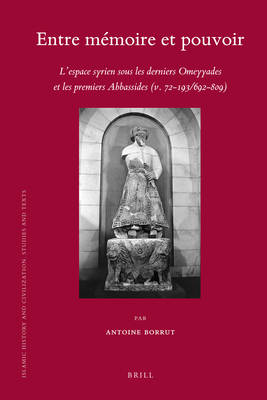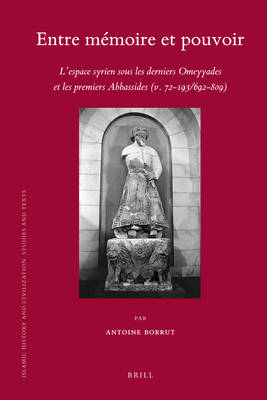
- Afhalen na 1 uur in een winkel met voorraad
- Gratis thuislevering in België vanaf € 30
- Ruim aanbod met 7 miljoen producten
- Afhalen na 1 uur in een winkel met voorraad
- Gratis thuislevering in België vanaf € 30
- Ruim aanbod met 7 miljoen producten
Zoeken
Entre Mémoire Et Pouvoir
L'Espace Syrien Sous Les Derniers Omeyyades Et Les Premiers Abbassides (V. 72-193/692-809)
Antoine Borrut
€ 381,95
+ 763 punten
Omschrijving
Cet ouvrage entend démontrer qu'une solide culture de l'écriture de l'histoire existait dans la Syrie du 2e/8e siècle, et propose de nouvelles approches méthodologiques afin d'offrir un accès vers cette historiographie perdue, tiraillée entre mémoire et oubli. En étudiant la fabrique des héros omeyyades ou des mythes d'origines abbassides, cette étude s'efforce de mettre au jour les significations successives données à l'histoire syrienne, et d'identifier les différentes strates d'écritures et de réécritures de l'histoire au cours des premiers siècles de l'islam. L'ensemble de ces éléments conduit à proposer une histoire du sens de l'espace syrien, articulée autour de la thématique du pouvoir, qui donne une profonde cohérence à la période, par-delà la césure dynastique de 132/750.
This book intends to demonstrate that a robust culture of historical writing existed in 2nd/8th century Syria, and to offer new methodological approaches to access this now lost history, torn between memory and oblivion. By studying the making of Umayyad heroes or Abbasid origins-myths, this study aims to reveal the successive meanings granted to Syrian history, and to identify the various layers of historical writing and rewriting during the first centuries of Islam. Taken together, these elements make possible a history of the meaning of the very space of Syria, articulated around power and its expression, which grants a clear coherence to the period, extending well beyond the dynastic caesura of 132/750.
This book intends to demonstrate that a robust culture of historical writing existed in 2nd/8th century Syria, and to offer new methodological approaches to access this now lost history, torn between memory and oblivion. By studying the making of Umayyad heroes or Abbasid origins-myths, this study aims to reveal the successive meanings granted to Syrian history, and to identify the various layers of historical writing and rewriting during the first centuries of Islam. Taken together, these elements make possible a history of the meaning of the very space of Syria, articulated around power and its expression, which grants a clear coherence to the period, extending well beyond the dynastic caesura of 132/750.
Specificaties
Betrokkenen
- Auteur(s):
- Uitgeverij:
Inhoud
- Aantal bladzijden:
- 572
- Taal:
- Frans
- Reeks:
- Reeksnummer:
- nr. 81
Eigenschappen
- Productcode (EAN):
- 9789004185616
- Verschijningsdatum:
- 11/11/2010
- Uitvoering:
- Hardcover
- Formaat:
- Genaaid
- Afmetingen:
- 165 mm x 246 mm
- Gewicht:
- 1065 g

Alleen bij Standaard Boekhandel
+ 763 punten op je klantenkaart van Standaard Boekhandel
Beoordelingen
We publiceren alleen reviews die voldoen aan de voorwaarden voor reviews. Bekijk onze voorwaarden voor reviews.








